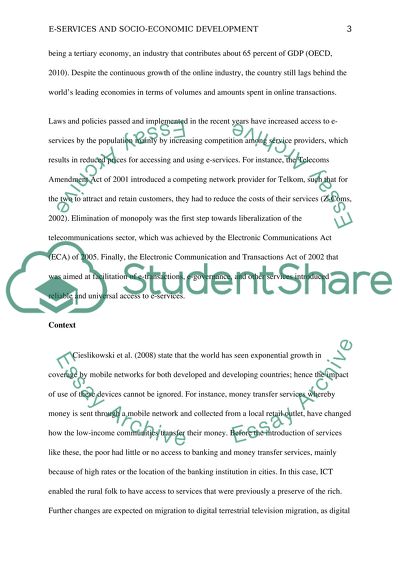Cite this document
(“The Impact of E-Services on Socio-Economic Development in South Africa Research Paper”, n.d.)
Retrieved from https://studentshare.org/e-commerce/1446230-the-impact-of-e-services-on-socio-economic
Retrieved from https://studentshare.org/e-commerce/1446230-the-impact-of-e-services-on-socio-economic
(The Impact of E-Services on Socio-Economic Development in South Africa Research Paper)
https://studentshare.org/e-commerce/1446230-the-impact-of-e-services-on-socio-economic.
https://studentshare.org/e-commerce/1446230-the-impact-of-e-services-on-socio-economic.
“The Impact of E-Services on Socio-Economic Development in South Africa Research Paper”, n.d. https://studentshare.org/e-commerce/1446230-the-impact-of-e-services-on-socio-economic.


